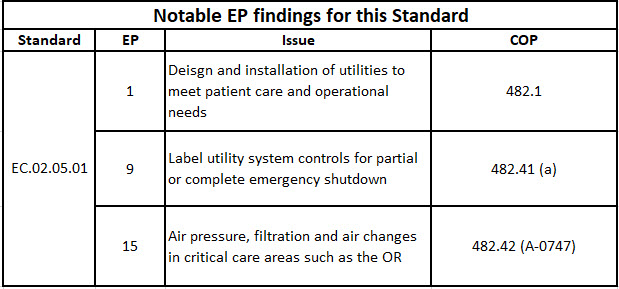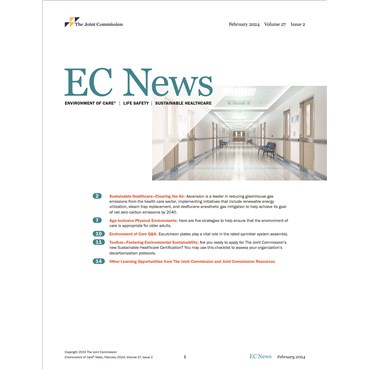Protect patients from airborne contaminates.
Properly designed and installed ventilation systems reduces the concentration of airborne contaminates through dilution, filtration, and pressurization.
Hospital-acquired infections.
Inability of the utility systems to operate as expected may result in air-borne contaminates negatively impacting an already compromised patient.
Harm to the patient.
Airborne contaminates are a significant source of health care-associated infections (HAI). HAI may adversely impact patient during a hospital stay.
Ensure utilities equipment effectively meets clinical needs.
Properly designed, installed and maintained ventilation systems contribute to the reduction of HAI. Environmental controls will create a compliant patient care setting resulting in high reliability.
Accurate utility system control labeling provides for safe emergency shutdown.
A utility system can fail for a number of reasons. When failure occurs, the organization has to be prepared to safely shut sown or isolate the system to make repairs or replace components, and to mitigate any adverse impact. Improper shutdown can lead to catastrophic results. To ensure correct utilities shutdown, clearly label the utility system's controls and link them to detailed instructions or a check list.
Improper shutdown may create a catastrophic event, placing patients, staff and visitors in danger, and risking damage to critical and expensive equipment.
Results of an improper shutdown: The water supply to a malfunctioning boiler is improperly shutdown and causes an explosion.
Results of a proper shutdown: Properly labeled circuit breakers and switches allow hospital staff to disrupt a minimal number of patient services, while effectively isolating the hazard.
Clearly labeled shutdown protocols allows the organization to safely isolate, repair, or replace failed utility components.
In emergency situations, the organization must be able to quickly isolate the hazard, but not create additional crisis. Clearly labeled shutdowns controls of utility systems removes risk and establishes safe conditions to correct the failed system.
Accurate labeling of utility system controls will facilitate partial or complete emergency shutdowns.
Facilities staff should evaluate utility system labeling. Then, they should create a utilities capacity and usage plan that identifies system vulnerabilities restored during an emergency. Finally, facilities staff should have a plan to communicate to leadership and to the clinical team the status of the utility systems from shutdown, to corrective actions, to restoration of normal operations.




